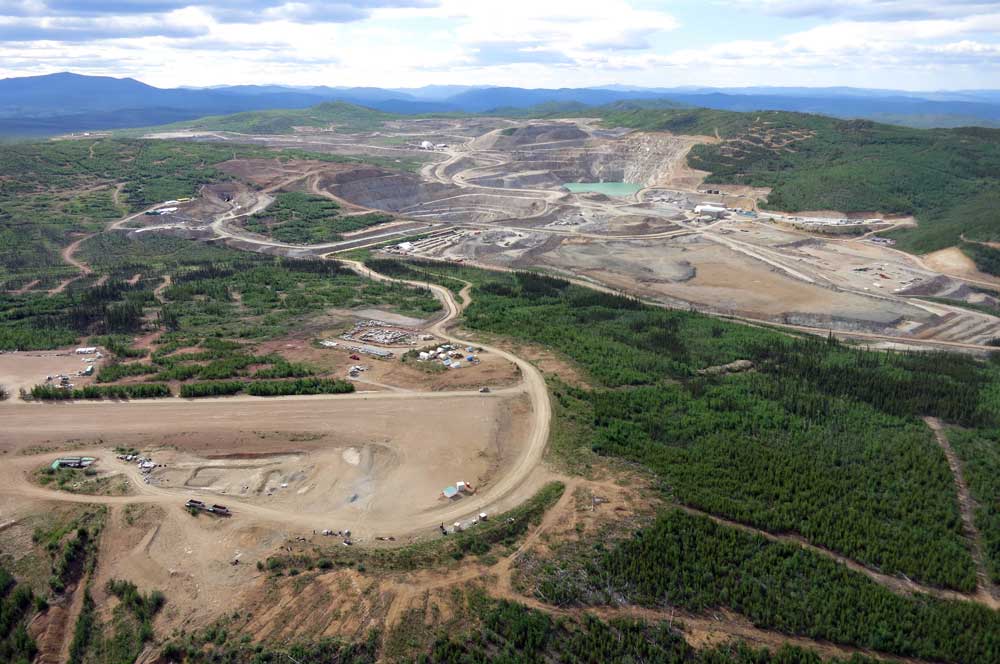OPEN FOR BUSINESS
Located in the traditional territory of the Northern Tutchone, the Selkirk First Nation is located at the village of Pelly Crossing on the Klondike Highway in the Central Yukon. Today, there are 704 members of the Selkirk First Nation, and that number is growing every year, with about 40 per cent of its citizens living in Pelly Crossing.
In July of 1997, the Selkirk First Nation signed their Self-Government and Final Agreements, a major move towards economic self-sufficiency. Selkirk First Nations have always depended on the land for survival, and is continuing on that tradition to find new ways to work with non-Aboriginal businesses in developing the significant mineral resources on its traditional territory.
That signing prompted the Selkirk Frist Nations to develop the Selkirk Development Corporation (SDC) to contribute to the economic prosperity of the First Nation. The SDC is strategically positioned to capitalize on profitable business ventures that maximize opportunities in the traditional territory and surrounding areas. Specifically, the SDC deals with all of the Real Estate, Joint Ventures and Agreement on behalf of Selkirk First Nations. Selkirk First Nation share-holders—the chief and council—negotiate all agreements on the behave of SFN Government which are implemented by Selkirk Development corporation because of the revenues that are generated. This keeps the SFN Government on side with no off sets to the FTA Funds.
“We are currently working on our strategic plan with our shareholders—the chief and council of Selkirk First Nation—to pursue business opportunities, particularly in mining or real estate, with their backing,” says Jeremy Harper, one of the Board of Directors for SDC. Harper was Wolf councillor for the Selkirk First Nation for six years before joining the business arm of the SDC five years ago. A jovial man in his thirties, Harper has seen first hand the positive impact the SDC has had on his community. “A self-governing First Nation and business development are two different entities and functions entirely, and we work to find the best partnerships and opportunities for both sides,” he says, “so that we can not only be self-governing, but completely self-supporting now and in future generations.”To facilitate business development, the SDC employs a CEO to vet business proposals and bring them to the Board of Directors.
The SDC also works with various business advisors and consultants with expertise in various service providers and mining companies. The CEO’s mandate is to make money on behalf of Selkirk First Nation and invest in joint ventures and expand its operations. The SDC is seeking to establish new business partnerships to take advantage of the many opportunities both within the traditional territory of the Selkirk First Nation and throughout the Yukon.
The SDC’s joint venture with Capstone Mining is a good example of the positive relations SDC has forged. Capstone’s Minto Mine is an open pit copper mine. In operation since 2007, activities are slated to wind down in 2017, but with an approximate three-year mine life beyond 2017 in reserves, the company is considering further options. SDC receives royalties from operations on its Category A traditional territory( this designation mean the Selkirk First Nation have rights to surface and ground minerals), and also provides significant support operations to aid in the overall operation of the mine.
“When Selkirk First Nation and Minto Mines renegotiated the impact benefit agreement, it was done for the long-term benefit of both parties.” Indeed, in the last nine years, says Harper, Selkirk First Nation has prospered from strong negotiations and trusted collaboration with Minto Mines and its other businesses. “Council took a smart approach didn’t rush anything and that’s why we have a strong agreement with Minto mines,” says Harper. “Our nation wants to take care of our citizens, to take care of our lands, and to prosper, and for our partners to thrive as well.”
The last major mining boom the Yukon experienced was between 2008 to about 2012, according to the Resource Development Preparedness Strategy report, which suggests the Yukon is ramping up for increased economic activity soon. The SDC is confident more mining operations are coming down the pipeline, such as the Casino project, a copper, gold, molybdenum and silver deposit about 300 km northwest of Whitehorse. Currently in the environmental assessment review stage, the project is among the largest copper-gold deposits in the world. The Casino project will come in realization in next three to five years, and there is significant interest in mining on Selkirk traditional territory.
SDC also has a real estate play investments and owns multiple commercial properties in Whitehorse including Waterfront Station, Titanium Way, and Black Street Building—a joint partnership with other First Nations). The Selkirk Centre is also an important stop halfway between Whitehorse and Dawson City, and offers a gas station, grocery store, motel, TD Bank and Canada Post outlets and hot food service. Harper says SDC is looking to further diversify its portfolio, to ensure the prosperity of the First Nation long after the mines are closed.
Members of the Whitehorse Chamber of Commerce, and respected in the local community as reliable and hardworking joint venture partners, SDC plays an integral role in the development of the resource-rich Selkirk First Nation territory, and bringing economic prosperity to the Selkirk First Nations.







